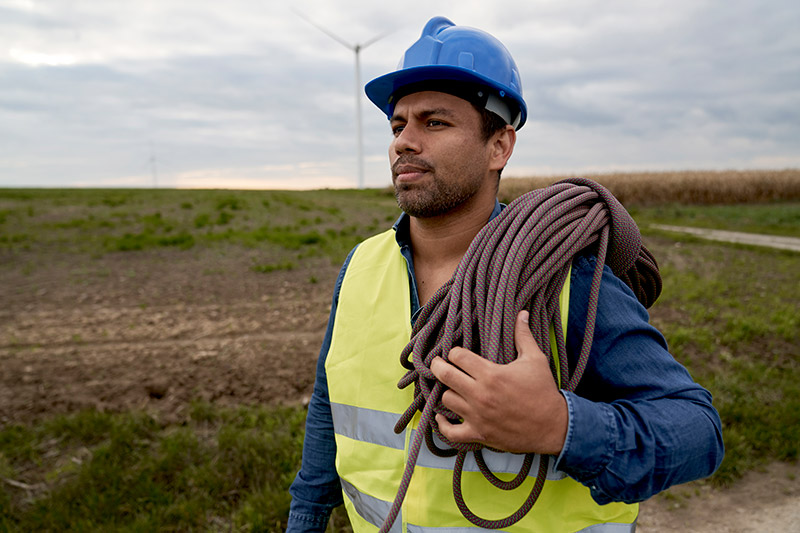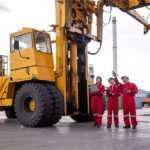Across industries, millions of employees work alone—far from immediate help when emergencies arise. From security guards patrolling empty buildings overnight to field technicians servicing remote equipment, lone workers face unique safety challenges that require specialized protection strategies. When these employees experience medical emergencies, workplace accidents, or security threats, the absence of nearby colleagues can transform manageable situations into life-threatening crises.
The scope of lone worker employment continues expanding as organizations embrace flexible work arrangements, lean staffing models, and distributed operations. While working in isolation offers benefits like increased focus and operational efficiency, it also eliminates the safety net that coworkers provide through immediate assistance, emergency response, and simple human observation that can detect when something goes wrong.
Understanding Lone Worker Vulnerabilities
Lone workers face amplified versions of standard workplace risks. A slip and fall that might result in minor embarrassment in a populated workplace can become a fatal incident when no one is present to summon help. Medical emergencies like heart attacks or strokes, which have survival rates closely tied to response speed, become significantly more dangerous without immediate assistance.
Environmental hazards pose heightened risks for isolated workers. Exposure to toxic gases, electrical hazards, or confined space dangers can quickly overwhelm lone workers who lack backup support or immediate rescue capabilities. Even routine maintenance tasks become more dangerous when performed without someone available to shut off power, call for help, or provide immediate first aid.
Security threats represent another critical concern. Lone workers in retail environments, healthcare facilities, or public-facing roles may encounter aggressive individuals, robbery attempts, or workplace violence situations without the deterrent effect of multiple staff members or immediate backup support.
Essential Communication Systems
Effective lone worker protection begins with reliable communication systems that ensure isolated employees can summon help when needed. Traditional approaches like scheduled check-ins provide basic safety nets but often rely on workers being conscious and able to communicate, limiting their effectiveness during medical emergencies or unconsciousness situations.
Modern lone worker monitoring systems address these limitations through automatic monitoring capabilities. These systems can detect when workers fail to check in at predetermined intervals, haven’t moved for extended periods, or have experienced sudden impacts suggesting falls or accidents. When concerning patterns are detected, the systems automatically alert emergency contacts or monitoring centers.
Personal emergency devices, ranging from simple panic buttons to sophisticated wearable monitors, provide workers with immediate access to help. The most effective devices combine multiple activation methods—manual panic buttons for conscious emergencies, man-down sensors for unconsciousness situations, and GPS tracking for location identification during crises.
Risk Assessment and Hazard Mitigation
Lone worker safety programs require comprehensive risk assessments that consider both standard workplace hazards and the amplified risks created by isolation. These assessments should evaluate the specific locations where employees work alone, the tasks they perform, and the potential consequences of various emergency scenarios.
Environmental controls become especially important for lone workers. Enhanced lighting in isolated areas, clear egress routes, and elimination of slip and trip hazards take on greater significance when no one is present to provide immediate assistance. Security measures like controlled access systems, surveillance cameras, and emergency communication points can provide additional protection layers.
Task modification may be necessary for lone worker situations. High-risk activities that might be acceptable with proper supervision and backup support may require additional safeguards, alternative approaches, or reassignment to times when multiple workers are present.
Technology Solutions and Monitoring
Technology offers increasingly sophisticated solutions for lone worker protection. Smartphone applications can provide check-in capabilities, GPS tracking, and emergency communication functions using devices workers already carry. These apps can monitor worker movement patterns and automatically alert supervisors when unusual patterns suggest potential problems.
Wearable devices designed specifically for lone worker protection offer more robust monitoring capabilities. These devices can detect falls, monitor vital signs, track location continuously, and provide multiple communication methods. Some advanced systems integrate with building security systems, vehicle tracking, and emergency response services for comprehensive protection.
Monitoring centers staffed by trained operators provide professional emergency response capabilities that many organizations cannot maintain internally. These services can assess emergency situations, coordinate with local emergency services, and maintain communication with isolated workers during extended incidents.
Training and Preparedness
Lone workers require specialized training that addresses both standard safety procedures and the unique challenges of working in isolation. This training should emphasize personal responsibility for safety, proper use of communication equipment, and decision-making skills for situations where immediate supervision isn’t available.
Emergency response training becomes critical for lone workers who may need to provide their own first aid or navigate emergency situations without immediate support. Workers should understand how to assess their own medical conditions, provide basic self-care, and communicate effectively with emergency responders about their situations and locations.
Building Effective Programs
Successful lone worker safety programs integrate technology, procedures, and training into comprehensive protection systems. These programs should establish clear policies about when lone work is acceptable, what protective measures are required, and how emergencies will be managed.
Regular program evaluation ensures that protection measures remain effective as work conditions, technology, and organizational needs evolve. This includes testing communication systems, reviewing emergency response procedures, and gathering feedback from lone workers about practical challenges they encounter.
The goal of lone worker safety programs isn’t to eliminate all risks—that’s impossible when people work in isolation. Instead, effective programs minimize risks through thoughtful preparation and ensure that when emergencies do occur, isolated workers have reliable means to summon help quickly. By combining appropriate technology, comprehensive training, and well-designed procedures, organizations can provide lone workers with protection that approaches the safety benefits of working alongside colleagues while maintaining the operational benefits of distributed work arrangements.



